What you need when hiking in the Appalachian Mountains
Find out what you really need to get out on a mountain trail
There’s no activity that is more closely associated with the Appalachian Mountains than hiking. Hiking is to the mountains what going to the beaches is to Florida: it is what you do here.
The Appalachian Mountains are home to some of the best hiking on the East Coast – and many would say in the world. The region gives its name to the longest hiking trail in the United States, the Appalachian Trail. Its 800 rugged, challenging miles are the stuff of legend. It’s not for everybody.
But what if you are everybody? Can regular ol’ people get on a trail and hike? What gear do you really need?
Let me show you!

You don’t need to be a fitness guru gearhead to hike
The Appalachian Trail’s fame and reputation have lured millions of people into the woods. It forms the cornerstone of American hiking culture. Whole industries have grown up around it. That’s great for dedicated hikers searching for the best, most comfortable gear to give them an advantage on the trail.
But it has also given the false impression that hiking in the Appalachian Mountains is a complex operation undertaken by super-fit hikers in high-tech clothing carrying their body weight in gear. Hikes don’t have to be epic journeys with weeks of supplies packed into and hanging from enormous backpacks. You are going for a walk in the woods, not an epic journey á la The Fellowship of the Ring.
At its heart, hiking is as basic to being human as eating. While it is possible to drop thousands of dollars on expensive equipment and dedicate months to a long journey, it’s important to remember that hiking is really just walking outside.
It’s as simple as that. Go for a walk. Experience nature. Take in a fantastic view.
Hiking gear…what do you REALLY need to get on the trail?
If you believe tourist websites and clothing ads, you would think that mountain trails are packed with great-looking fitness models decked out in colorful clothing made of high-tech, high-dollar fabrics. In reality, a trail in any mountain state will be a cross-section of America. You’ll see young and old, families, yuppies, hippies, old-timers, and first-timers. Some have all the gear you can imagine. Most have whatever makes them comfortable.
You don’t have to spend a fortune.
For generations, people wore whatever they happened to have on when the idea to walk in the woods popped into their heads. Remember, modern elastopolymer hiking boots with gel inserts are just that: modern. For thousands of years over billions of miles, people just walked in whatever they had on hand.
But let’s get more in depth…
What do you need hiking in the Appalachian Mountains?
We will discuss generalities. Understand that the Appalachian Mountains cover thousands of miles from north to south, so you will have to use common sense regarding local climate, weather, and season. When hiking in the Appalachian Mountains, plan for change–dramatic change. Just in case.
We’ll get into each of the following in detail, but here are the basics:
Clothing:
- Most important: comfortable, sturdy shoes. This is the most important gear you will need.
- Socks. I’d rank these as #2 in importance. They work as a team with your shoes.
- Shorts or pants. Comfort is key here.
- Shirt. Long- or short-sleeved, depending on the conditions.
- Rain jacket. If rain MIGHT be in the forecast, rain WILL be on the trail. Bring one.
- Hat. Keeps the sun out of your eyes and branches off your face.
For clothing, think layers. Even in the summer, temperatures can fluctuate dramatically. Cool mornings can turn hot by noon. Scorching afternoons can turn icy cold by evening.
Non-hiking gear:
- Most important: Water carrying device. From bottles to bladders, the options are endless. Pick what works for you, but bring something no matter how long you plan to hike.
- Snacks. This is my #2. Like water, you need to have a little food on hand to get you through the hike.
- Flashlight. Night falls early in deep hollers. Don’t rely on your phone light in the woods.
- Backpack. depending on the planned duration, you might want a pack of some sort to carry your extra clothing layers, snacks, and other items.
- Compass. Not required but helpful.
- Map. Also not required on well-established trails, but could be a lifesaver.
- Hiking sticks. Some people love ‘em.
- Knife. A small knife is the most important tool to carry in the woods.
- Cell phone. In many places, coverage is sketchy or non-existent, but on high ground you might get coverage.
- Sunscreen. Getting a burn is never fun, and can ruin a vacation.
- First aid kit. A basic kit with bandages, antiseptic, and pain relief meds, can fix small trail injuries.
- Bug repellent. Depending on when and where you hike, this can make a miserable hike pleasant.
What you don’t need
- Axe, hatchet, machete, etc. You aren’t staying overnight, so a fire is probably not in the cards. And you aren’t blazing a trail or building a cabin. You are walking in the woods. Leave this stuff at home.
- Firearms. Hiking isn’t hunting, so a long gun isn’t necessary. Self-defense is a personal issue, but be aware that many parks do not allow firearms.
- Jewelry. There is nothing worse than losing a precious necklace in the autumn leaves somewhere between that stream where you fell down the bank and the big oak tree where you realized it was missing.
- Camera gear. Unless you are a photographer, this stuff gets heavy over time and is cumbersome.
- Make-up. No one cares how you look out there. Leave it in the car.
Clothing: Layering for Variable Weather
The Appalachian Trail’s weather can be unpredictable, making layering crucial. Here are some suggestions for clothing and other hiking gear that will get you on the trail in comfort and style. There are three levels of clothing suggestions: what you have in your closet (no cost), what you can get at Walmart (Budget), and items to order from Amazon (Mid-range). These are just suggestions. Look at the TYPE of clothing more than the actual product.
Note: Links may change and products will go in and out of availability. We will update when possible, but if you get to the Amazon or Walmart sites and search for the product name, you will usually find the latest model, or at least something similar.
Base Layer (Moisture-Wicking)
Men
Probably in your closet now: Best choice is a wicking polyester or wool shirt. Avoid cotton, as it is hydrophilic (loves water). Cotton clothes will hold moisture next to your skin, which will cause you to lose body heat fast. If you have only a cotton T for a base layer, be sure to regulate your upper layers and activity level to maintain a “comfortable cold.” That is where you are cool enough to avoid sweating but warm enough to not feel cold. It takes some practice, but it’s possible to do it effectively.
Budget Option:
Russell Athletic Men’s Dri-Power T-Shirt – $9.98
Lightweight and breathable, ideal for moisture management.
Available at Walmart
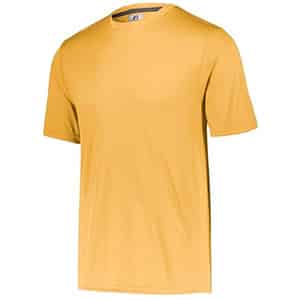
Mid-Range Option:
Merino.tech Merino Wool Base Layer – $49.99
Offers excellent moisture-wicking properties.
Available at Amazon

Women
Probably in your closet now: A fitted polyester T-shirt will work well under other layers and over a sports bra (at least avoid bras with underwire). The less open the neckline the better, as the body heat you are trying to trap will spill up and out of a scoop neck. Cotton is a poor choice as it holds moisture next to your skin, which will cause you to lose body heat fast. If you have only a cotton T for a base layer, be sure to regulate your upper layers and activity level to maintain a “comfortable cold.”
Budget Option:
BASSDASH Women’s UPF 50+ UV Sun Protection T-Shirt Long Sleeve – $15.98-$23.98
Lightweight and breathable, ideal for moisture management, good for sun protection.
Available at Walmart
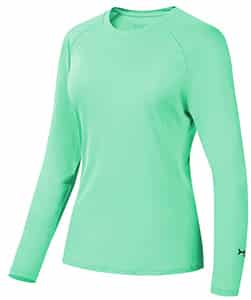
Mid-Range Option:
Columbia Steens Mountain Fleece Jacket
Combines the aesthetic of a sweater with the warmth of fleece.
Available at Amazon

Mid Layer (Insulation
Men
Probably in your closet now: Wool sweaters made good mid-layers. Wool breathes and lets moisture escape while providing warmth. If it’s really cold, a heavy sweater will be comfortable. In cool weather, that old Aran fishing sweater will be a bit much. A polyester fleece is also a good choice.
Budget Option:
Hanes EcoSmart Fleece Hoodie – $15.00
Soft fleece providing warmth without bulk.
Available at Walmart
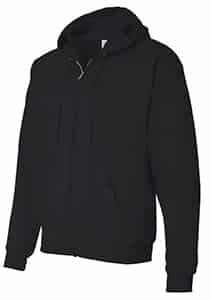
Mid-Range Option:
Smartwool Women’s Intraknit Thermal Merino Base Layer – $62.00
Offers excellent moisture-wicking properties and thermal regulation.
Available at Out&Back Outdoor
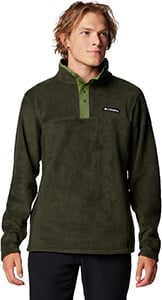
Women
Probably in your closet now: A polyester fleece jacket or pullover is in most wardrobes. They work well. Wool sweaters made good mid-layers. Wool breathes and lets moisture escape while providing warmth.
Budget Option:
Hanes Women’s EcoSmart Fleece Hoodie – $15.00
Soft fleece providing warmth without bulk.
Available at Walmart
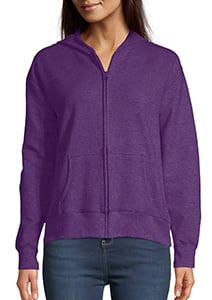
Mid-Range Option:
Columbia Women’s Glacial half-zip – $39.99
Combines the aesthetic of a sweater with the warmth of fleece.
Available at Amazon
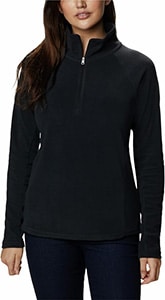
Outer Layer (Rain and Wind Protection)
Bringing a rain jacket when hiking in the Appalachian Mountains is important due to the region’s unpredictable weather. Sudden rainstorms are common and can lead to hypothermia if you’re unprepared. A rain jacket keeps you dry, warm, and comfortable, helping maintain safety and enjoyment throughout your hike.
Men
Probably in your closet now: Most of us have a windbreaker of some sort. It might not be an expensive Gore-Tex hiking jacket, but it will keep the wind off. You can manually regulate the ventilation with the zipper.
Budget Option:
Frogg Toggs Ultra-Lite Rain Suit – $19.98
Affordable and packable rain protection.
Available at Walmart
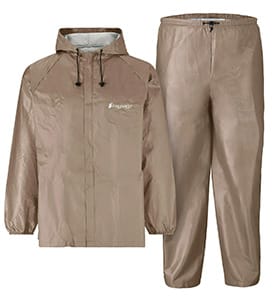
Mid-Range Option:
Columbia Watertight II Jacket – $59.99
Lightweight and durable against wind and rain.
Available at Amazon
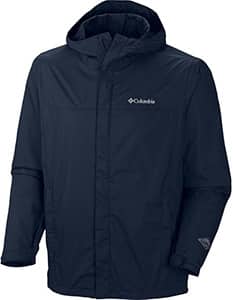
Women
Probably in your closet now: Almost any windbreaker in your closet will do the job of keeping wind and rain off as you hike. If you don’t have a Gore-Tex jacket on hand, you can regulate the ventilation with the zipper.
Frogg Toggs Women’s Ultra-Lite Rain Suit – $19.99
Affordable and packable rain protection.
Available at Walmart
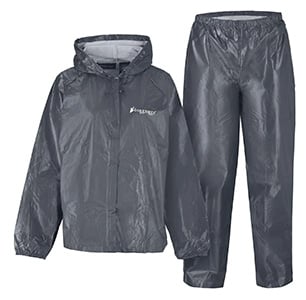
Mid-Range Option:
Outdoor Research Women’s Stratoburst Stretch Rain Jacket – $82.50
Lightweight and durable against wind and rain.
Available at Outdoor Research
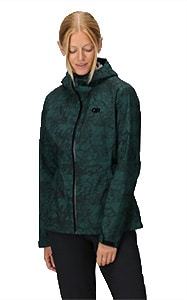
Footwear: Where the rubber meets the road…or trail
Choosing the right footwear is vital for comfort and safety when hiking in the Appalachian Mountains.
Men
Probably in your closet now: Running or tennis shoes. Running shoes generally don’t have as much lateral support as dedicated hiking footwear, but they are made to move you forward over the ground. Tennis and basketball shoes have more support but usually a less aggressive tread, so you might find yourself skiing down a muddy incline.
Budget Option:
Ozark Trail Sport Hiker – $33.99
Rugged leather upper and rubber outsole and comfortable for various terrains.
Available at Walmart
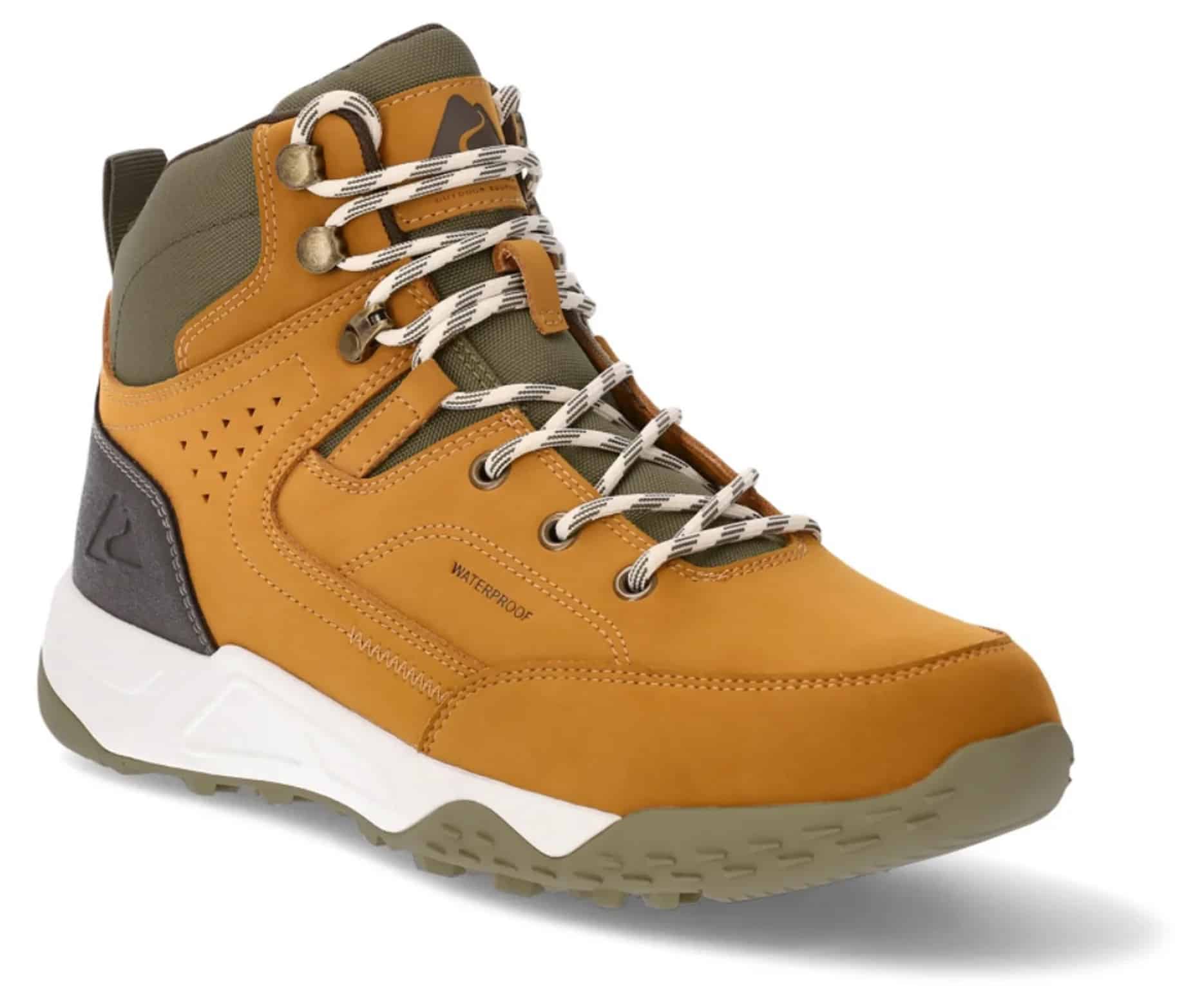
Mid-Range Option:
Merrell Moab 2 Vent Hiking Shoe – $94.35
Lightweight with enhanced cushioning.
Available at Amazon
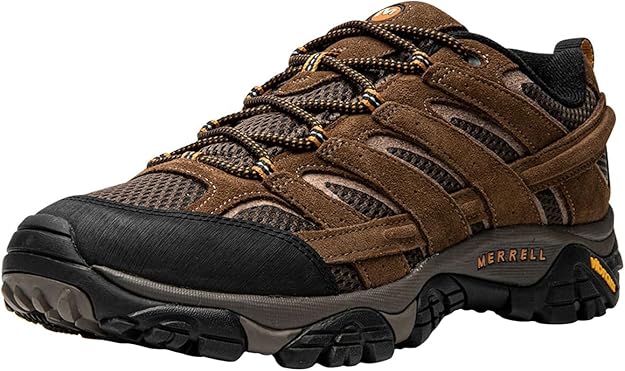
Women
Probably in your closet now: Running, aerobic, or tennis shoes. Aerobic shoes have good all-directional support but, like tennis and basketball shoes, have fairly flat tread profiles. When traction is important, these might not be the best choice. Running shoes might not have as much lateral support but they often have fairly aggressive tread patterns. Plus, they are designed for comfort and traveling over ground.
Budget Option:
Ozark Trail Women’s Waterproof Stoneclad Hiking Boots – $29.99
Breathable and comfortable for various terrains.
Available at Walmart

Mid-Range Option:
Columbia Women’s Newton Ridge Plus Waterproof Amped Hiking Boot – $106.99
Durable mid-cut waterproof hiker providing great traction and comfort.
Available at PrimeSmart

Hiking Pants and Shorts
Men’s Hiking Pants
Probably in your closet now: Men don’t usually have a wide range of pant choices in their closet. If you have a pair of light hunting or even tactical (tacticool?) pants, just grab a pair of jeans. They are an outdoorsman’s standby with 150 years of back country service.
Ozark Trail Men’s & Big Men’s Zip Off Convertible Cargo Pants – $22.98
These are made of a blend material that is breathable and comfortable. The zip off legs are surprisingly handy. Cool mornings often give way to warm afternoons, and it’s nice to have to carry only one garment for both.
Available at Walmart
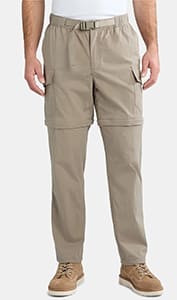
Columbia Men’s Silver Ridge Convertible Pant – $64.95
Offers protection against harmful UVA and UVA rays as well as breathable, wicking fabric that pulls moisture away from your body. Removable legs makes them great for temperature changes.
Available at Amazon
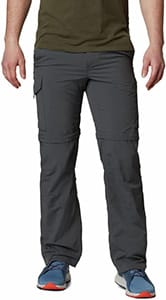
Women’s Hiking Pants
Probably in your closet now: Women usually have more pants styles on hand than men. Yoga pants and similar tights, usually breathable and comfortable, make a great choice for the trail. Jeans are always a good fall-back, but avoid anything too tight to allow free movement.
Budget Option:
Rosvigor Women’s Cargo Hiking Pants – $18.88
Women yoga pants fabric is lightweight, quick dry, slightly elastic, breathable and comfortable.
Available at Walmart

Mid-Range Option
Outdoor Research Women’s Ferrosi Pants – $99.00 Lightweight and breathable with excellent mobility.
Available at Amazon
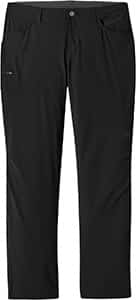
Men’s Hiking Shorts
Probably in your closet now: Sports shorts are good for hiking since they are usually made of a breathable polyester. The downside is a lack of pockets, but that can be overcome with a fanny pack or backpack. Otherwise, any cargo short, preferably not all cotton, will work well.
Budget Option:
Columbia Silver Ridge Cargo Short – $44.99
100% nylon ripstop with Omni-Shade UPF 50 and Omni-Wick moisture management. Four pockets, gusseted inseam, drawcord waist. Classic outdoor short—light, breathable, and ideal for hot days on the trail.
Available at Walmart
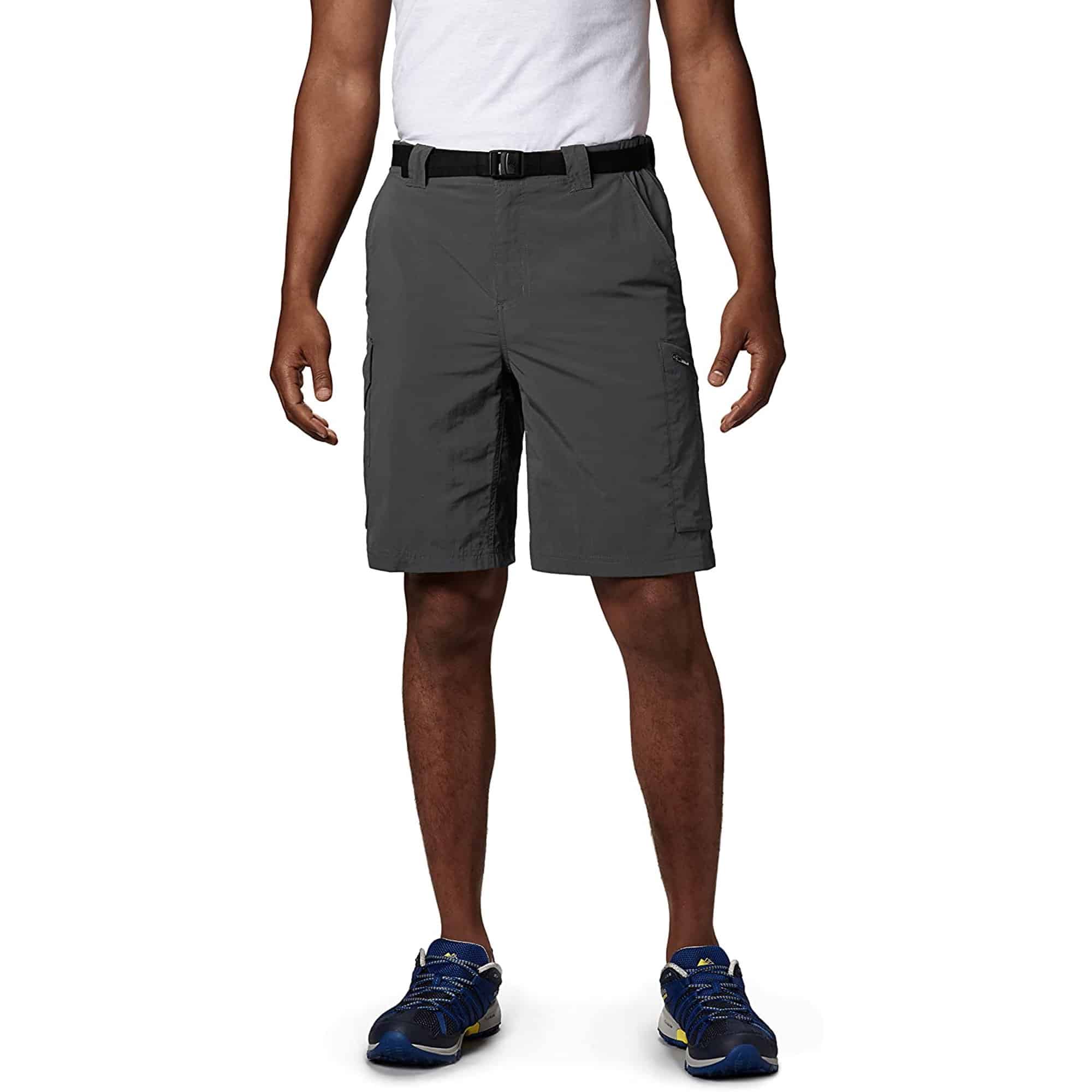
prAna Stretch Zion Shorts II – $84.00
100% water-repellent nylon. Built-in belt, zip side pocket, articulated waistband, antimicrobial lining. Offers outstanding mobility and quick-dry performance—great for fast-paced hikes or creek crossings.
Available at Amazon
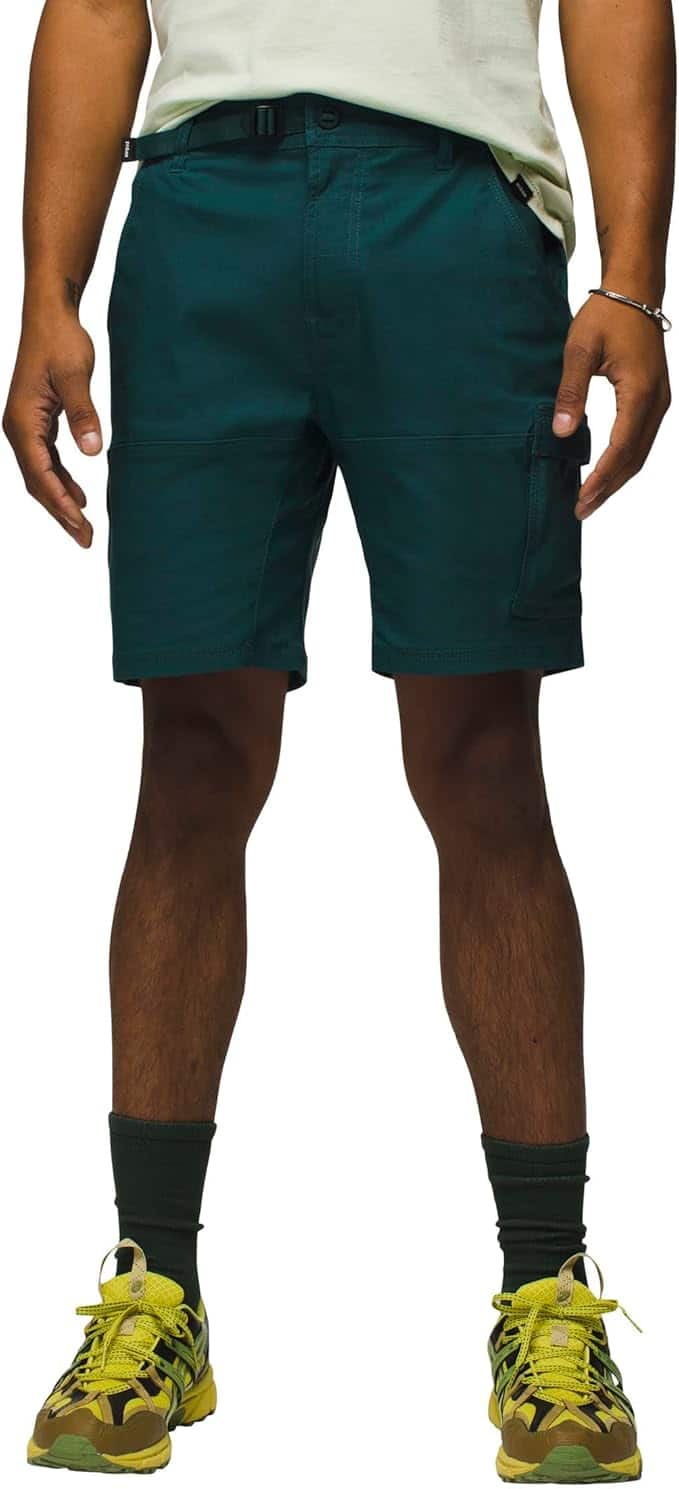
Women’s Hiking Shorts
Probably in your closet now: Gym and cycling-style shorts are popular, but often lack pockets. That’s okay, as you can use a fanny pack or a backpack to hold items otherwise pocketed. Shorts with pockets are preferable, but avoid tight clothing as it can restrict movement on the trail.
Budget Option:
Willit Women’s Hiking Athletic Shorts – $35.99
Lightweight, breathable fabric with multiple pockets.
Available at Willit Sports
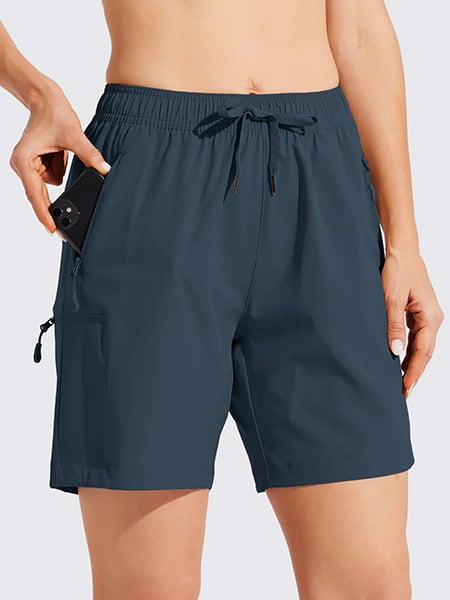
Mid-Range Option
Patagonia Women’s Maipo Shorts – $69.00
High-waisted biker shorts with great mobility and sustainability focus.
Available at Patagonia(Switchback Travel)
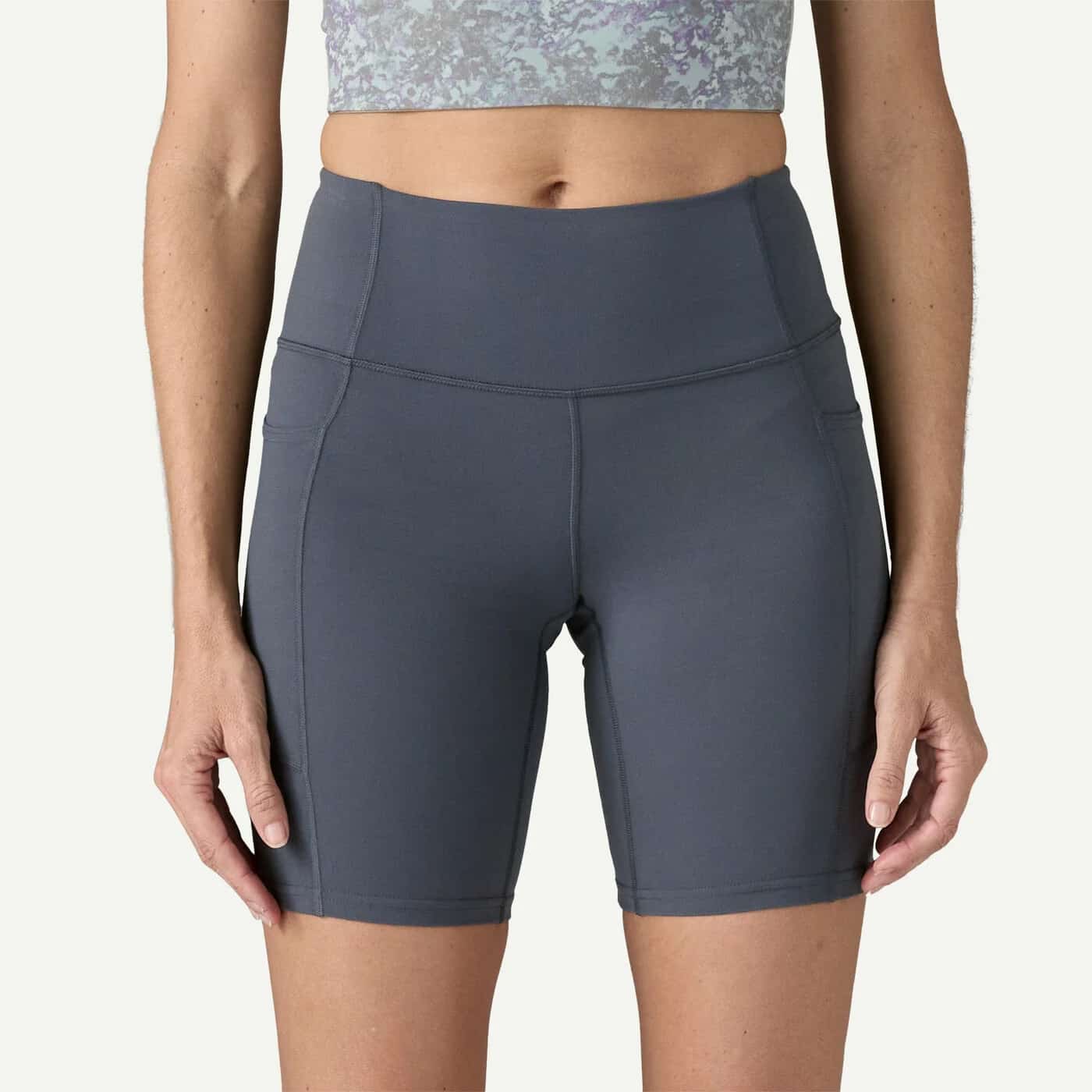
Hydration: Staying Refreshed
Proper hydration is crucial when hiking in the Appalachian Mountains. Do NOT make the mistake of thinking you are just going for a short hike, so you don’t NEED to take water. You do. Dehydration sneaks up on you. Worse, You might be on a trail much longer than planned. Injuries happen. You might get lost.
Probably in your kitchen or garage now: A bicycle water bottle is a great choice. The nozzle valve allows hands-free access, which is great when carrying item something in the other hand. Second choice is the standard bottled water container. It’s light and can be crushed down to pack out (never drop it). Downside is the cap has to be unscrewed to take a sip, and a bottle can burst if you drop it or fall on it. The shortcoming of both of these is that they are troublesome to carry. You will want a pack of some sort to stow them while on the move.
Budget Option:
Ozark Trail 2L Hydration Bladder – $12.99
Compact and effective for carrying water on the go.
Available at Walmart
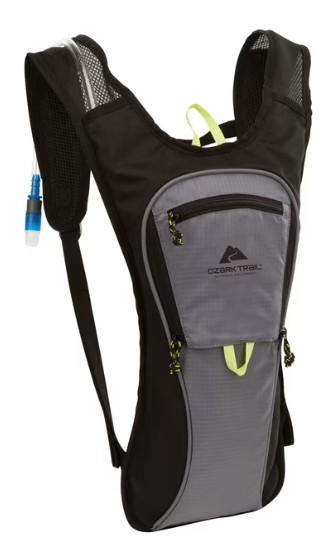
CamelBak Crux 3L Reservoir – $49.99
Combines hydration and storage in one pack.
Available at Amazon
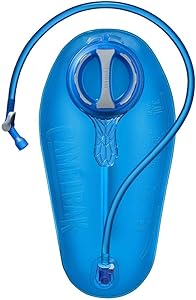
Hiking Hats
Wearing a hat while hiking in the Appalachian Mountains protects against sunburn, heat, and rain, helping regulate body temperature and improving comfort on the trail. When selecting a hiking hat, consider features like wide brims for sun protection, breathable materials for ventilation, and adjustable fittings for comfort.
Men
Probably in your closet now: A baseball-style cap or visor. Any one will do. Choose a model that isn’t too heavy and has a decent size bill to keep the sun off.
Budget Option:
BackpackerLife Hiking Hat – $32.00
This hat offers optimal protection against the elements with its wide brim and durable design.
Available at BackpackerLife

Kooringal Men’s Hiker – Redondo – $40.00
This hat features airflow panels and a moisture-wicking sweatband, ensuring comfort during strenuous hikes.
Available at Kooringal

Women
Probably in your closet now: A baseball-style cap or visor. Go for a lightweight fabric with a decent bill to keep the sun off your face.
Budget Option:
FitVille Women’s Trailblaze Foldable Hiking & Sun Hat V2 – $26.90
Foldable design with adjustable fit and breathable fabric.
Available at FitVille
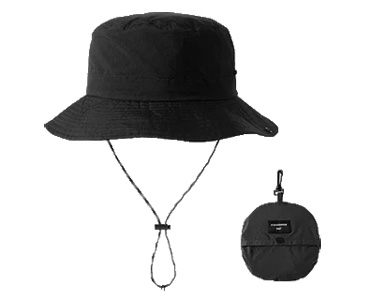
Mid-Range Option
Sunday Afternoons Women’s Ultra Adventure Hat – $42.00
Offers UPF 50+ sun protection with a moisture-wicking sweatband.
Available at Amazon
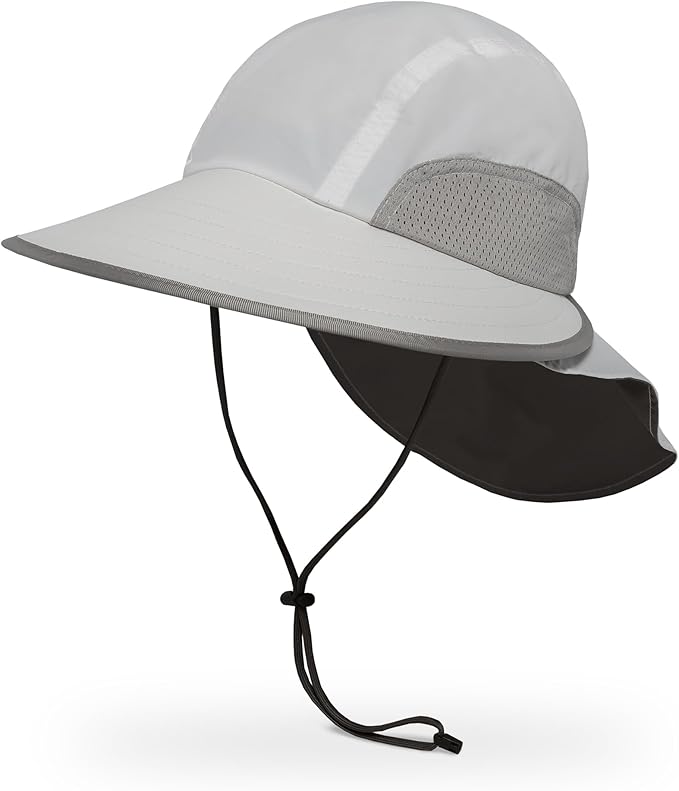
Backpacks and Fanny Packs: Carrying Essentials Comfortably
Choosing the proper backpack or fanny pack when hiking in the Appalachian Mountains ensures comfort, support, and easy access to gear, making your trek safer and easier.
Backpacks
On a short hike, a backpack may not be necessary. A good backpack balances capacity, comfort, and durability.
Budget Option:
Ozark Trail 35L Hiking Backpack – $39.99
Affordable with ample storage and rain cover.
Available at Walmart
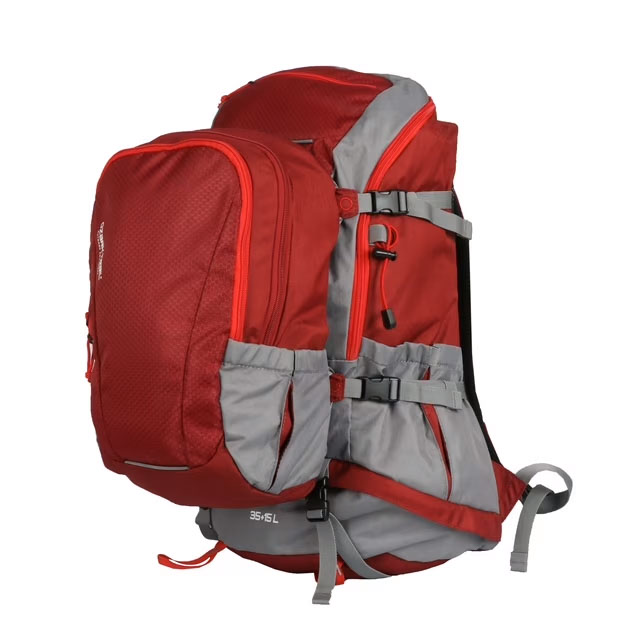
Mid-Range Option
TETON Sports Scout 3400 Internal Frame Backpack – $79.99
Lightweight with excellent ventilation.
Available at Amazon

Mid-Range Option for women:
Osprey Sirrus 24 Women’s Day Hike Backpack – $172.00
Slimmed down, tough pack with ventilated carry and integrated raincover.
Available at Gear Trade

Fanny Packs
Fanny packs get a bad rap these days. Often labeled “cringy” by the Gen Z crowd, fanny packs aren’t just for German tourists at Disney World. Hiking fanny packs serve a real use! They are terrific for shorter hikes where a backpack is a little overkill, plus they are lighter and don’t add weight and heat to your back. You can sling it over your shoulder to reduce the cringe and possibly look cooler to the kids. Be sure to get one with a water bottle holder.
Budget Option:
Brightify Fanny Pack, Crossbody Waist Bag with Water Bottle Holder for Men and Women. – $14.99
Good carrying capacity with an expandable water bottle holder.
Available at Walmart
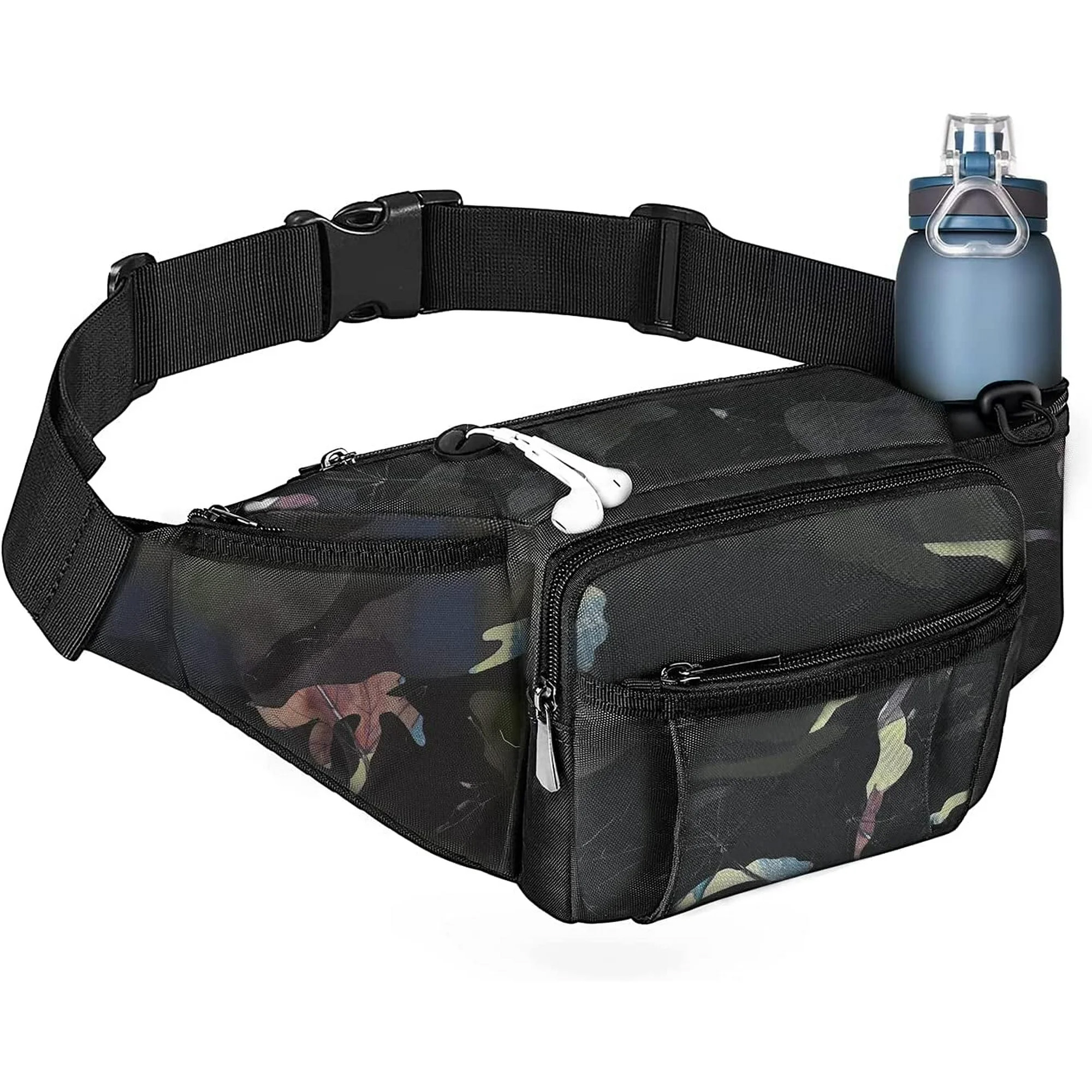
Mid-Range Option:
WATERFLY Fanny Pack Waist Bag – $29.99
Roomy fanny pack with space for two water bottles. It comes in 11 different colors and has high ratings.
Available at Amazon
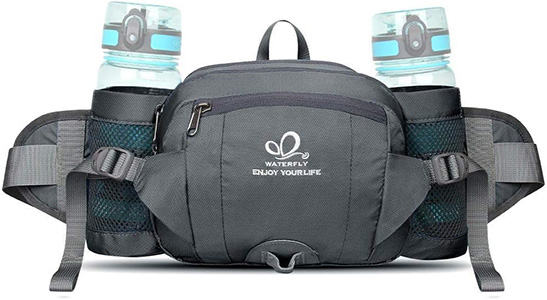
Snacks: Sustaining Energy on the Trail
Bringing snacks while hiking in the Appalachian Mountains keeps your energy up, prevents fatigue, stabilizes blood sugar, and helps you stay focused and strong on the trail. High-energy snacks are essential for maintaining stamina.
Budget Option:
Great Value Trail Mix – $5.00
Provides a quick energy boost with protein and carbs.
Available at Walmart

Mid-Range Option:
Kind Protein Bars –
$15.00 (12-pack) Balanced nutrition with a variety of flavors.
Available at Amazon
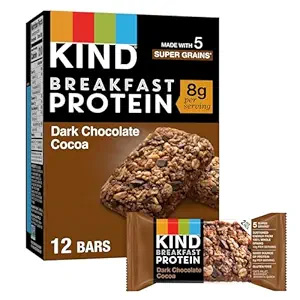
Lightweight First Aid Kit for Hikers
When hiking in the Appalachian Mountains, it is important to keep safety in mind and prepare in advance for any mishaps or unexpected situations. Being ready protects your well-being and can prevent emergencies from becoming life-threatening.
Basic Wound Care
- Adhesive bandages (various sizes) – for small cuts and blisters
Sterile gauze pads – to dress larger wounds - Adhesive medical tape – to secure gauze or bandages
- Antiseptic wipes – for cleaning wounds
- Antibiotic ointment (like triple antibiotic cream) – to prevent infection
- Hydrocolloid blister bandages or moleskin – for blister prevention and treatment
Medications
- Ibuprofen or acetaminophen – for pain or inflammation
- Antihistamine (like diphenhydramine) – for allergic reactions or bug bites
- Antacid tablets – for stomach discomfort
- Electrolyte tablets or powder – to prevent dehydration-related symptoms
Tools & Accessories
- Tweezers – for removing splinters or ticks
- Small scissors or folding medical shears – for cutting tape or clothing
Safety pins – to secure bandages or fabric - Gloves (nitrile or latex, 1 pair) – for hygiene while treating wounds
- Mini CPR face shield (optional) – in case of emergencies
Additional Essentials
- Small mirror – useful for inspecting hard-to-see injuries
- Emergency whistle – for signaling if you’re lost or in distress
- Compact first aid instruction card – for quick reference
- Ziploc or waterproof pouch – to keep everything dry and organized



0 Comments